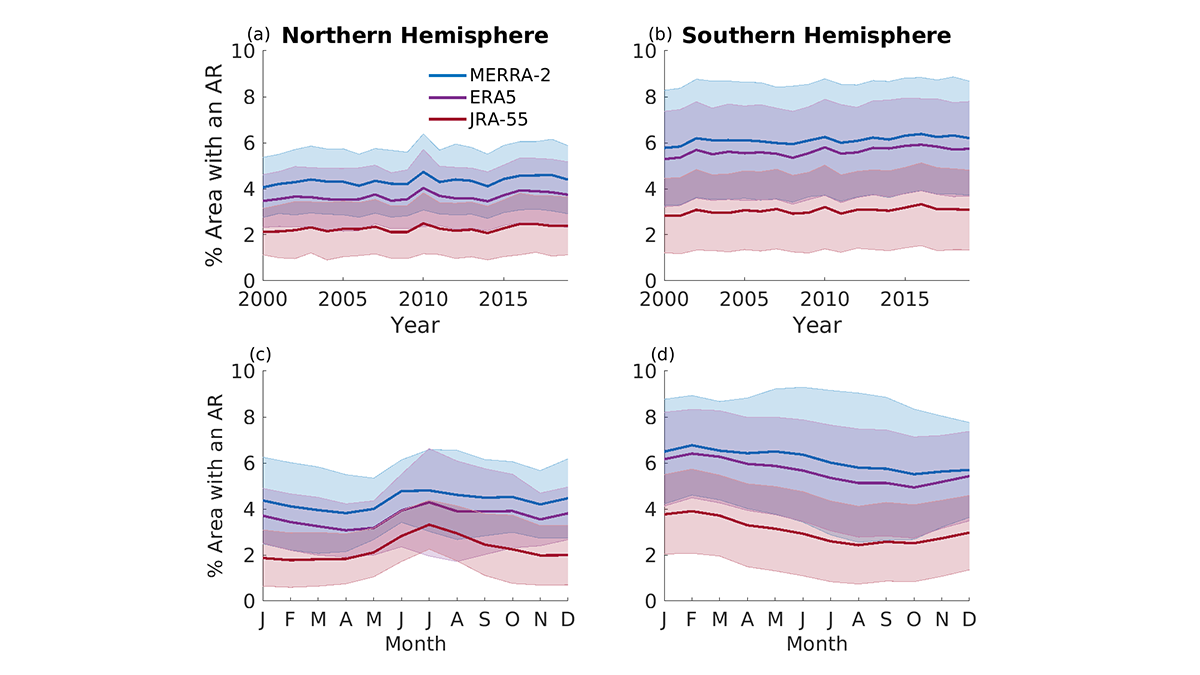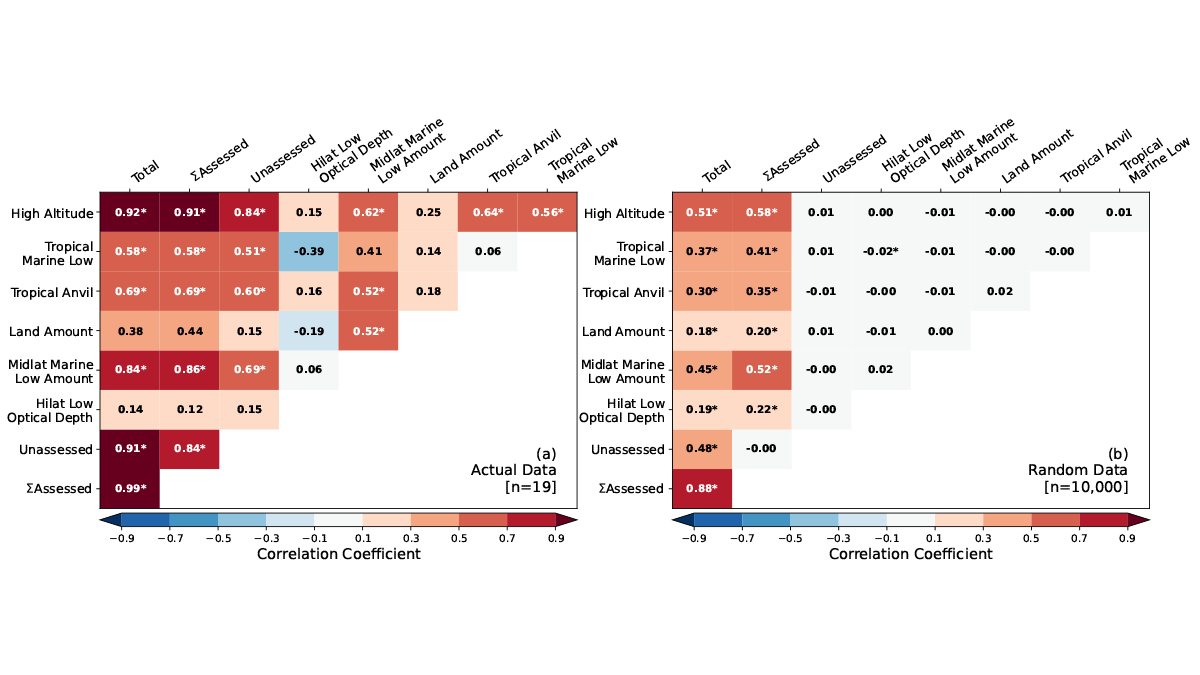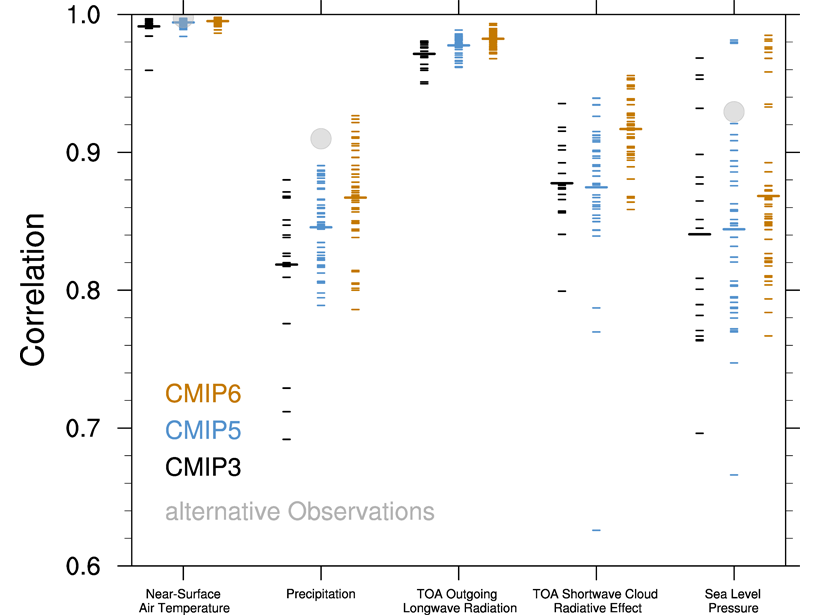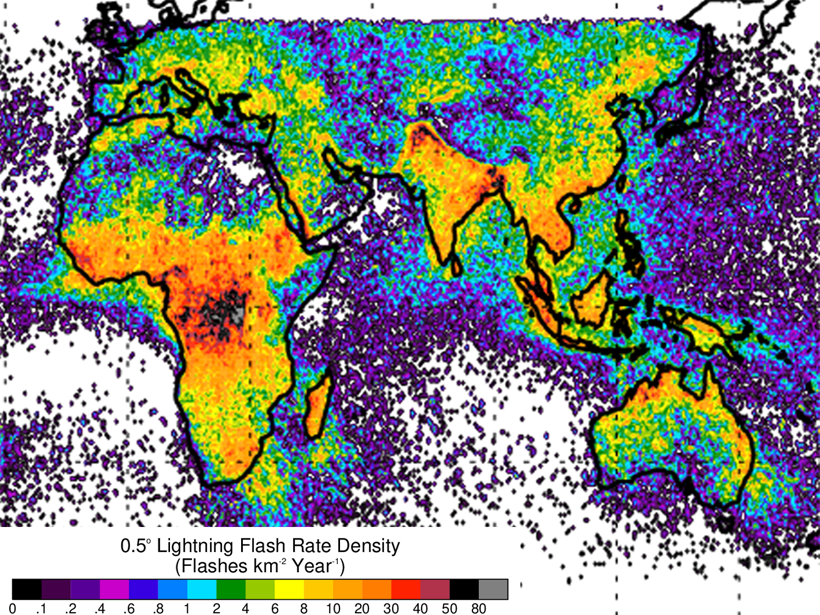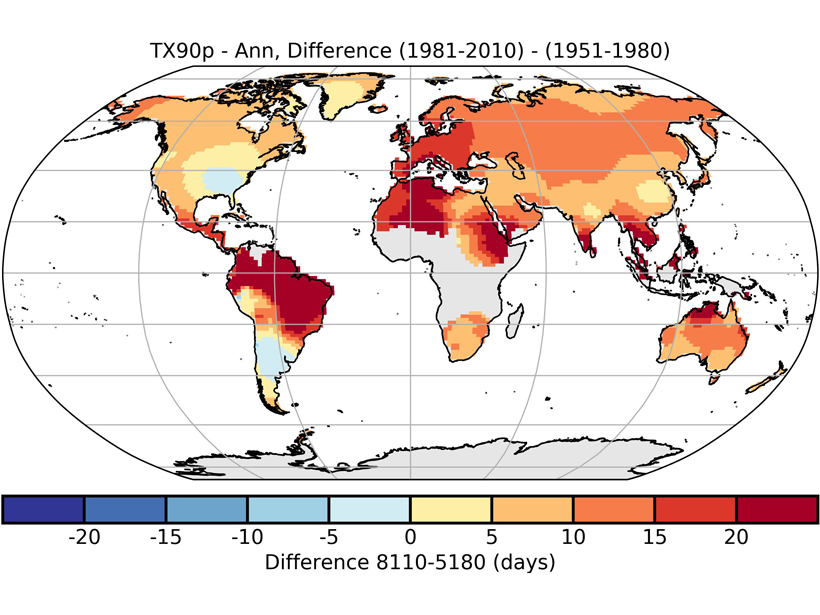Results from the Atmospheric River Tracking Method Intercomparison Project (ARTMIP) describe the similarity and difference of using eleven detection algorithms and three reanalysis products.
Minghua Zhang
Editor-in-Chief, JGR: Atmospheres
Radar Diagnosis of the Thundercloud Electron Accelerator
Altitude-resolved S-band radar observations of graupel are used to decipher thunderstorm ground enhancements in surface electric field and gamma ray flux.
Using Artificial Intelligence to Study Convection
Machine learning techniques are used to examine relationships between the large-scale state of the atmosphere, the convection total area, and the degree of organization in northern Australia.
Cloud Feedbacks in CMIP6 Models Versus Expert Synthesis
Models with smallest feedback errors are found to have moderate cloud feedbacks and equilibrium climate sensitivity of 3 to 4 degrees of warming when the concentration of carbon dioxide is doubled.
New Land Surface Air Temperature Global Dataset
The fifth major update of land surface air temperature data from the Climatic Research Unit and the Met Office has extended the time series, included more stations, and used better processing methods.
New Global Surface Temperature Dataset Spans 170 Years
HadCRUT5, the new version of the Met Office Hadley Centre/Climatic Research Unit global surface temperature dataset from 1850 to 2018, has extended and improved the previous temperature record.
Climate Modeling Progress in the Past 15 Years
An assessment and comparison of the performances of climate models participating in three phases of the Coupled Model Intercomparison Project (CMIP3, CMIP5 and CMIP6).
A New Look at Global Lightning from the Space Station
The Lightning Imaging Sensor on the International Space Station provides an expanded view of global lightning that improves scientific understanding of the Earth as well as public safety.
A New Dataset of Temperature and Precipitation Extremes
HadEX3 is an updated dataset of gridded temperature and precipitation extremes, that covers the period of 1901 to 2018 and has improved spatio-temporal coverage.
Streamer Corona Discharges in Thunderstorms Detected from Space
Concurrent detection from space and the ground of blue optical flashes from streamer corona discharges at altitudes between 8.5 and 14 kilometers and radio waves.

